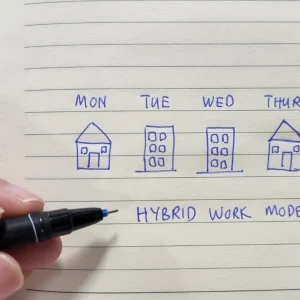The problem with controlling a Mars rover is that it’s on Mars. Mars, relatively speaking to us, is a fairly long way away.
Seriously, look at that link though.
This means, when sending radio signals to Curiosity, it takes about 13 minutes 48 seconds for the command to reach the rover. So as you can imagine, it’s pretty difficult to have a decent conversation with it, or react quickly if anything bad happens.
This delay is not caused by Neanderthal technology on our behalf, no, it’s obeying the fundamental laws of the universe, the speed of light (1,079,000,000 km/h).
However, a new system being worked on by scientists as we speak is aiming to help out with the delay, and at least make things a little easier for the people controlling far away robots.
By building a model of the terrain surrounding, let’s say for instance the Mars Rover Curiosity, scientists can be presented with an interface that let’s controllers forecast how the rover will move around within it, allowing pontential obstacles easier to overcome and decisions made nearer to real-time.
"You’re reacting quickly, and the rover is staying active more of the time," said computer scientist Jeff Norris, who leads mission operation innovations at the Jet Propulsion Laboratory’s Ops Lab.
Currently, commands are executed to Curiosity day by day. For example, one day it make get the commad to go over to some rock, then the next look closer a the rock, then the next, try and climb the first bit of the rock. It’s time consuming, and not very efficient.
"When we only send commands once a day, we’re not dealing with 10- or 20-minute delays. We’re dealing with a 24-hour round trip," said Norris.
Norris’ lab wants to make the speed and productivity of distant probes better. Their interface simulates more or less where a robot would be given a particular time delay. This is represented by a small ghostly machine — called the "committed state" — moving just ahead of a rover. The ghosted robot is the software’s best guess of where the probe would end up if operators hit the emergency stop button right then.
By looking slightly into the future, the interface allows a rover driver to update decisions and commands at a much faster rate than is currently possible.
Say a robot on Mars is commanded to drive forward 100 meters. But halfway there, its sensors notice an interesting rock that scientists want to investigate. Rather than waiting for the rover to finish its drive and then commanding it to go back, this new interface would give operators the ability to write and rewrite their directions on the go.
The team thinks that aspects of this new interface could start to be used in the near future, perhaps even with the current Mars rovers Curiosity and Opportunity. At this point, though, Mars operations are limited by bandwidth. Because there are only a few communicating satellites in orbit on the Red Planet, commands can only be sent a few times a day, reducing a lot of the efficiency that would be gained from this new system. But operations on the moon or a potential asteroid capture and exploration mission, such as the one NASA is currently planning, would likely be in more constant communication with Earth, providing even faster and more efficient operations that could take advantage of this new system.
Here’s a video of the system in practice, it explains everything better than I can.






